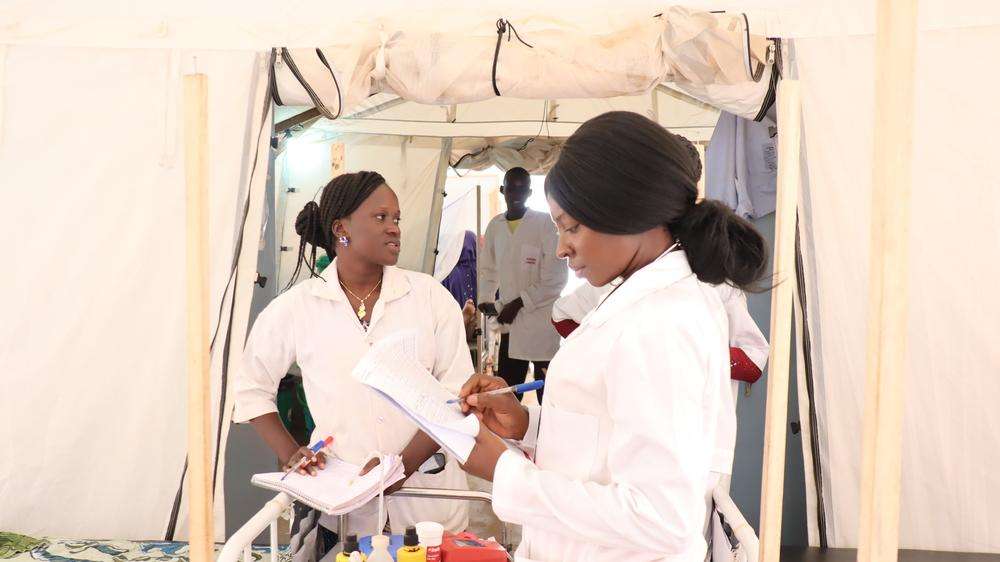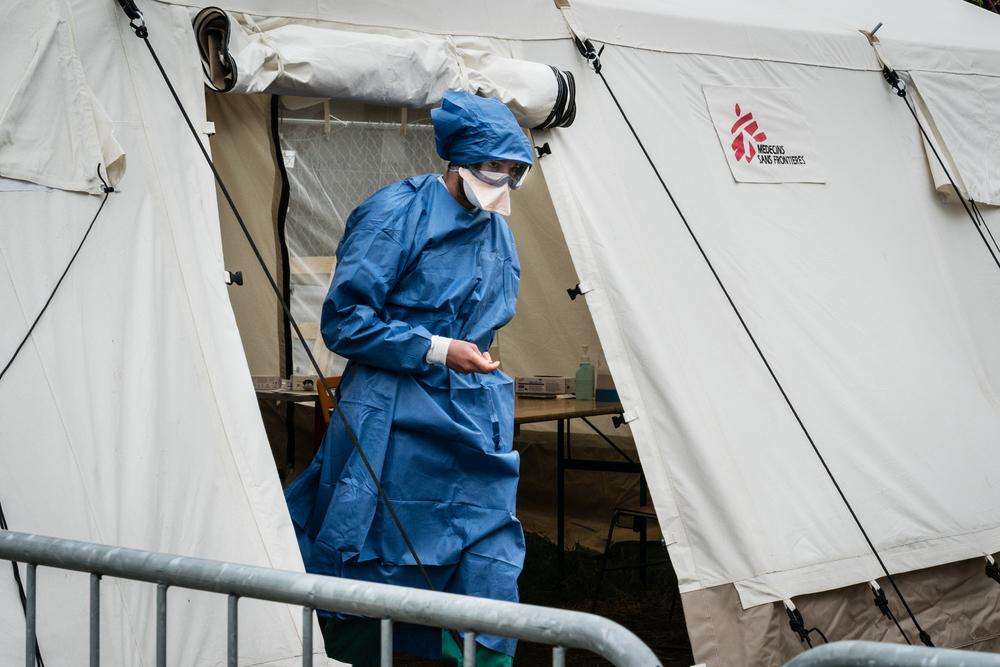Since the arrival of the novel coronavirus in the United States, and with each successive blow to our sense of normalcy and way of life, many Americans have turned to Doctors Without Borders/Médecins Sans Frontières (MSF). Can we—as one of the world’s largest medical humanitarian organizations—stop this pandemic?
The stark truth is, unfortunately, no. Not on our own—and not without the treatments and vaccines we need to end the outbreak. But there is a lot that we can do together to slow down the spread of this disease and protect those who are the most vulnerable to infection. With some 47,000 staff spread across more than 70 countries, MSF realized early in this pandemic that we need to share our experience and expertise in managing infectious disease outbreaks with frontline responders here and around the world. We need to multiply our efforts exponentially.
In this special edition of Alert, we’re showing you the early stages of our global effort to pivot toward partnerships and collaborations with local and national health authorities and other nongovernmental organizations. In some ways, this is how we always work when confronting a major epidemic—whether that’s Ebola or measles. Today, our teams are reaching out to conduct trainings and share best practices on vital infection prevention and control measures, building on some of the work we started in order to combat the growing long-term threat of antibiotic resistance. But the coronavirus emergency challenges us all, worldwide, to find new ways of working individually and collectively to flatten the curve of the epidemic.
In the US, and across Europe, many of our most seasoned aid workers have been grounded because of travel restrictions and precautions to avoid the spread of coronavirus from countries with high rates of transmission. (On March 26, the US became the new epicenter of the outbreak, as the country with the highest number of confirmed cases of COVID-19.) So we’re starting to go local and respond to the needs in our home communities. We urged doctors and nurses in our association to make themselves available to their area hospitals, especially in the overstretched emergency departments. We shared blueprints for field hospitals and patient flow charts; passed along digital training manuals to strengthen infection prevention and control; and disseminated instructions on how to don personal protective equipment. We coached a union representing farm workers, many of them migrants, on how to set up handwashing stations in agricultural fields. We advised managers of homeless shelters on how to safely isolate individuals who have mild symptoms of COVID-19. As this magazine goes to press, we are exploring the possibility of launching limited operations in New York, focusing on supporting infection control measures in facilities serving the homeless and housing insecure.
Yet the greatest needs remain elsewhere—in countries whose health systems cannot withstand the devastating impacts of this disease. Some 90 percent of the staff in our medical projects around the world are locally hired, and we are working to sustain our other lifesaving work even as we must adapt to the new realities. We always prioritize the safety of our staff, especially those in direct contact with contagious patients. If we cannot protect health workers, they cannot help others. That’s why our global procurement experts are trying to ensure that masks, gloves, and face shields are pre-positioned in some of the places likely to be hardest hit in the next wave of this pandemic.
MSF REALIZED EARLY IN THIS PANDEMIC THAT WE NEED TO SHARE OUR EXPERIENCE AND EXPERTISE IN MANAGING INFECTIOUS DISEASE OUTBREAKS WITH FRONTLINE RESPONDERS HERE AND AROUND THE WORLD.
Avril Benoît, Executive Director, MSF-USA
We’ve received many questions about triage, and which life to save when we cannot save everyone’s. MSF specializes in resource-poor settings that force our clinicians to restrict admission criteria for inpatients. We understand how to prioritize lifesaving efforts in the midst of an epidemic raging in a war zone. We know how to manage an overflow of patients while also minimizing the risk of contagion. MSF teams around the world are sharing this expertise with authorities at health ministries, refugee camps, and prisons, and with staff working in non-MSF clinics and hospitals. We also acknowledge that these are agonizing choices, and they never get easier no matter how much experience you have. But it helps to have clear clinical and ethical guidelines, as well as a commitment to providing mental health support for our staff.
We also promote an open and frank learning culture, internally for our own improvement and externally so that other health workers may benefit. We’ve been looking at how ventilators in short supply can be put to best use, such as putting more than one patient on each machine. We’re tracking the research on offlabel treatments, such as using malaria medications to treat those with COVID-19. We are constantly assessing whether and how diagnostics, vaccines, treatments, and even staffing models can be adapted to low-resource settings and harsh conditions.
We are working to anticipate future needs. Our experience with rapid point-of-care testing for HIV and TB using GeneXpert machines compelled us to immediately place a huge order for the cartridges for coronavirus as soon as they were announced. More broadly, MSF is calling for no patents or profiteering on the tests, drugs, or vaccines used in the COVID-19 pandemic. We are urging governments and pharmaceutical companies to ensure the availability of essential medical tools, reduce prices, and help save more lives from this disease. There is no other way to end this outbreak.
COVID-19 is so big that it threatens to overwhelm us all. But we must keep in perspective that each life we save is worth the effort. There are measures we can take—whether as individuals, governments, or corporations—to steer our way out of this crisis. By working together, we can collectively stand up to a virus that knows no borders.







